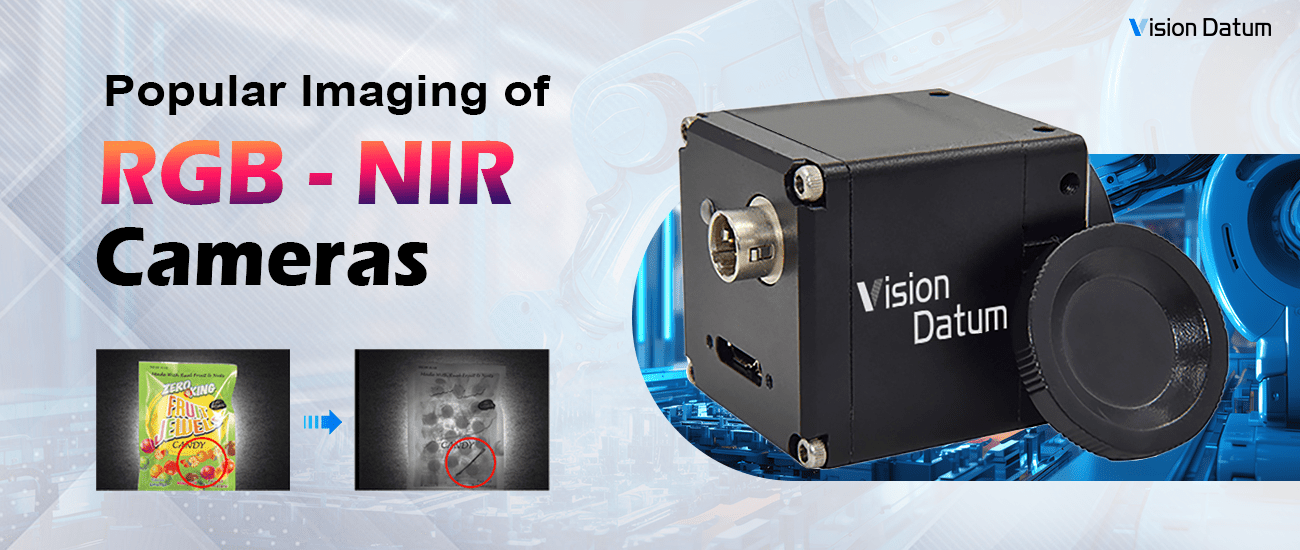In today's digital era, imaging technology constantly evolves, paving the way for innovations that revolutionize various industries. One such groundbreaking development is the RGB NIR (Red, Green, Blue, and Near-Infrared) camera. In this guide, we'll explore RGB NIR cameras, their advantages, uses, and how they are changing imaging technology.
An RGB NIR camera captures red, green, blue, and near-infrared light. An advanced imaging device can see both visible and near-infrared light. This unique combination allows for enhanced imaging capabilities, providing more detailed and insightful data than traditional RGB cameras.
You need a special infrared correction lens to see RGB + near-infrared images together. Ordinary industrial lenses can do the job if you only need to see near-infrared images. We have mentioned how to choose lenses for cameras in previous OPTICAL FORMAT articles.
1.How RGB NIR Cameras Work
RGB NIR cameras utilize specialized sensors and filters to capture both visible and near-infrared light. Advanced algorithms process the captured data to produce high-resolution images with enhanced detail. This technology uses the reflective properties of different materials in the NIR spectrum. These properties are unique and provide insights that standard RGB cameras cannot.
2.Benefits of RGB NIR Cameras
Better Image Quality: RGB NIR cameras capture both visible and near-infrared light to create clear and detailed images. This is particularly beneficial in scenarios requiring precise imaging, such as medical diagnostics and scientific research.
Improved Vegetation Analyzing: The ability to capture near-infrared light makes these cameras ideal for agricultural and environmental monitoring. NIR light is highly reflective in healthy vegetation, allowing for accurate assessments of plant health and growth.
Better Material Detection: RGB NIR cameras can differentiate between various materials more effectively. This is important in industries like recycling. Being able to distinguish between different types of plastics or materials can assist with sorting.
Improved Security and Surveillance: These cameras have near-infrared capability, which helps to see better in low-light conditions. This makes them useful for security and surveillance purposes.
Applications of RGB NIR Cameras
Agriculture: Farmers and researchers use RGB NIR cameras for crop monitoring, soil assessment, and precision agriculture. These cameras help in detecting plant stress, disease, and nutrient deficiencies early, enabling timely interventions.
Environmental Monitoring: RGB NIR cameras are essential tools for monitoring ecosystems, forests, and water bodies. They aid in tracking changes in vegetation, assessing water quality, and studying wildlife habitats.
Medical Imaging: In healthcare, RGB NIR cameras enhance imaging for diagnostics and surgical procedures. They provide detailed images of tissues, helping in the early detection of diseases and guiding surgeons during operations.
Industrial Inspection: Manufacturing industries use these cameras for quality control and inspection processes. They can detect defects, measure material properties, and ensure product consistency.
Surveillance systems deploy RGB NIR cameras for enhanced visibility in low-light environments for security and surveillance purposes. Border security, military applications, and public safety monitoring use them.
Choosing the Right RGB NIR Camera
When selecting an RGB NIR camera, consider the following factors:
Resolution: Higher-resolution cameras provide more detailed images, which is crucial for applications requiring precise measurements and analyzing.
Sensitivity: The camera's sensitivity to near-infrared light determines its effectiveness in capturing detailed NIR images. Ensure the camera you choose has high NIR sensitivity for optimal performance.
Consider how easily you can integrate the camera into your existing systems and workflows. Look for cameras with versatile connectivity options and compatible software.
Consider specialized features designed specifically for your industry and application when choosing a camera. This could include filters, lens options, or durable designs for tough environments.
Conclusion
RGB NIR cameras represent a significant advancement in imaging technology, offering unparalleled capabilities for a wide range of applications. Various industries such as agriculture, environmental monitoring, medical imaging, and industrial inspection can use these versatile cameras. They provide detailed data that can drive innovation and improve outcomes in different fields.You can choose Vision Datum, which not only provides high-sensitivity RGB NIR cameras, but also infrared correction lenses, filters and other accessories.
FOLLOW US👍👍
Enjoy!!
Support Us
Get More Products
► Mail
crips.xu@vtocn.com

